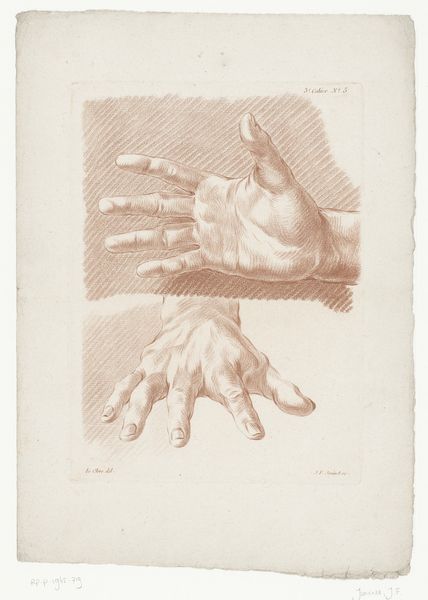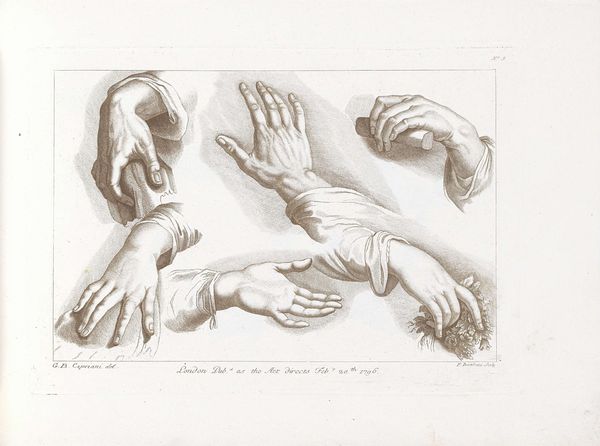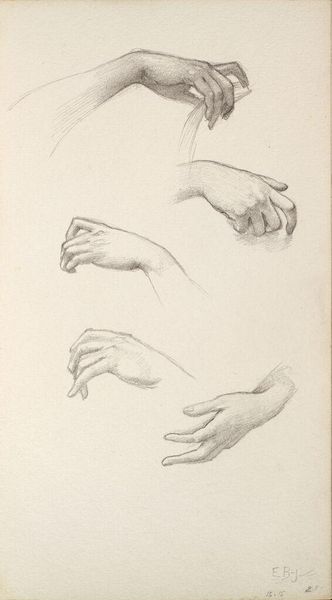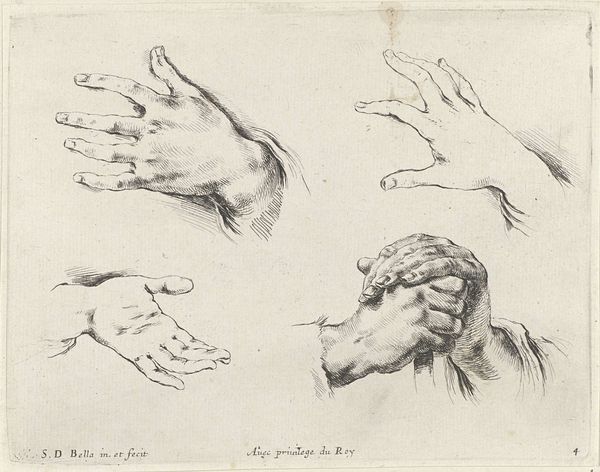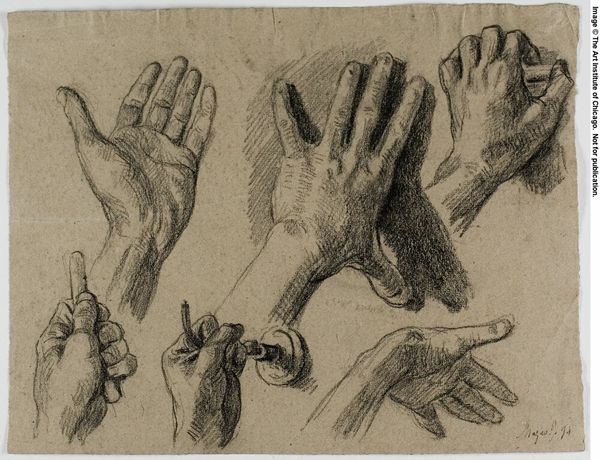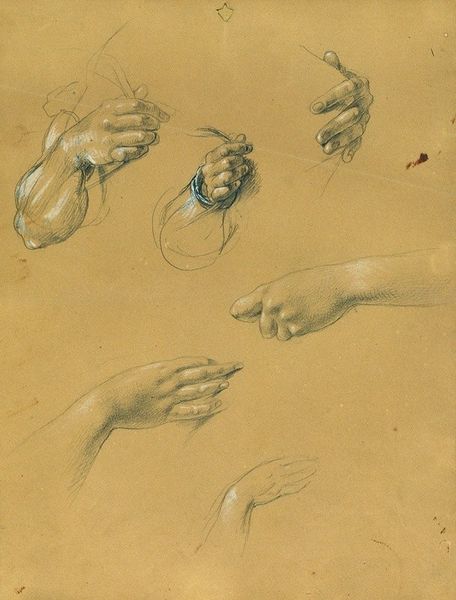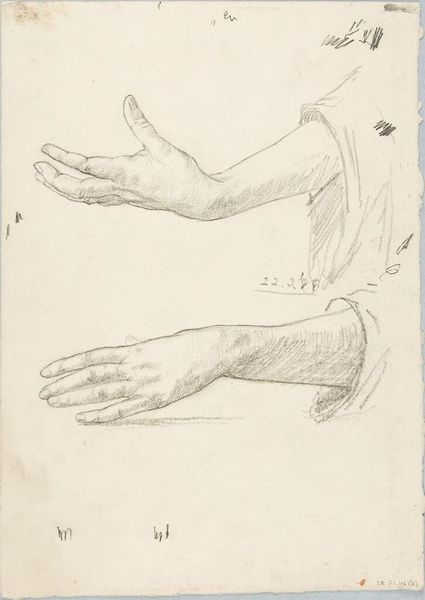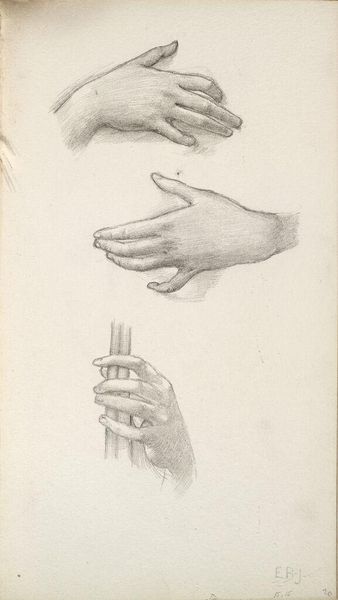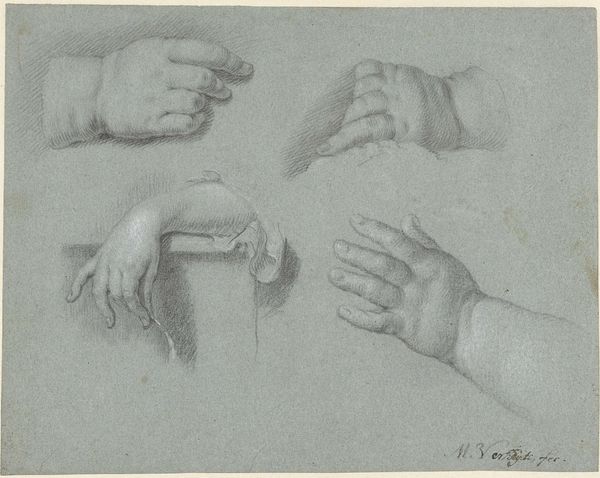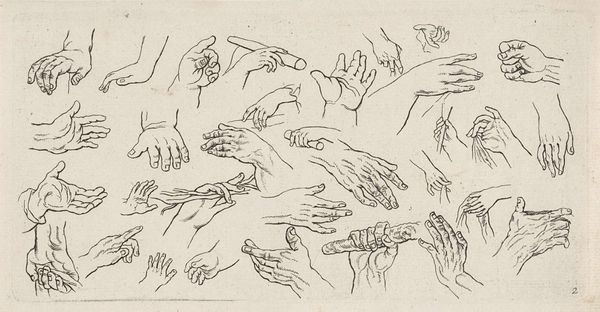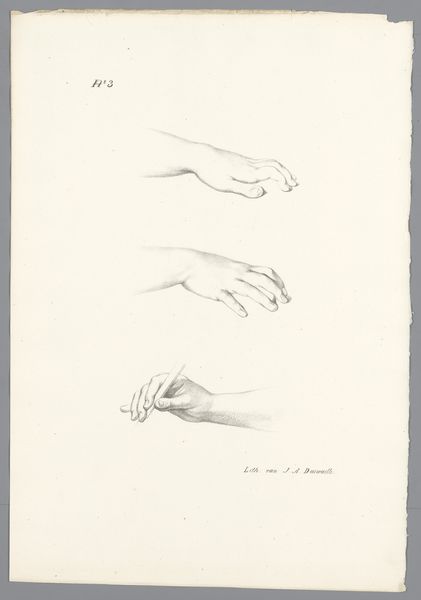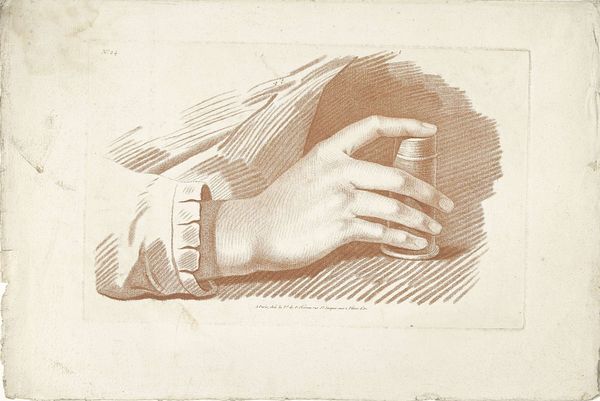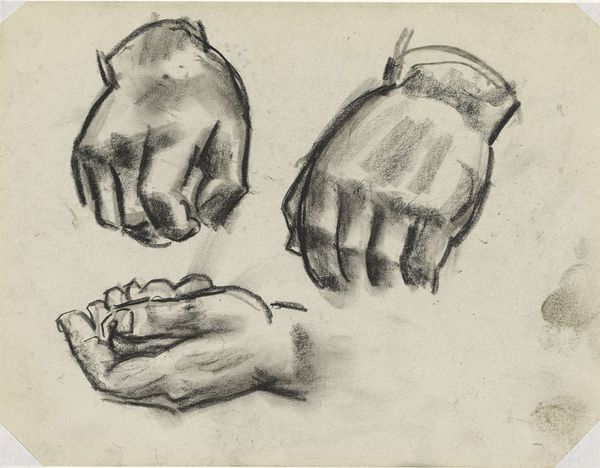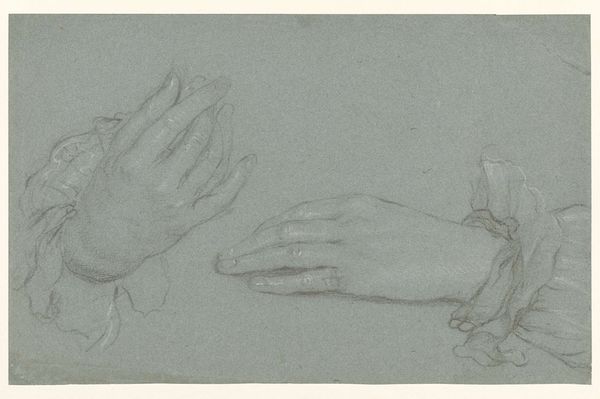
drawing, print, etching, graphite
#
portrait
#
drawing
#
light pencil work
#
baroque
# print
#
etching
#
pencil sketch
#
figuration
#
graphite
Dimensions: height 315 mm, width 218 mm
Copyright: Rijks Museum: Open Domain
Curator: This etching, "Studies van handen," dating roughly from 1616 to 1657, intrigues me. It’s attributed to Paulus Pontius and held in the Rijksmuseum. What strikes you first? Editor: Immediately, it’s the formality and restraint in the presentation. They seem both vulnerable and posed. There is something of an appeal to higher authority present in these studies. Curator: Fascinating. I read the rings as more than mere adornment. Each carries symbolic weight. The hand bearing the ring presenting its palm to hold some yet to be known importance. These aren’t simply studies, they’re about status and expectation. Editor: Contextually, such detailed hand studies would have been invaluable for artists, wouldn’t they? Workshops and the economics of collaborative artmaking created pressure for detailed records. I also wonder about their impact beyond the art world - whether such representation carried the expectations of behavior? Curator: Absolutely. Consider how hand gestures function as a language. A subtle tilt, a grasping motion. This piece showcases not just artistic skill, but a vocabulary of touch that informs Baroque painting. Also, note the variety, from the elegant wrist adorned with pearls to the pragmatic holding of an object. Editor: So the details provide social insight beyond purely artistic interest? These could well be posed recreations and not mere anatomy, a deliberate choice reflecting societal structure of that period. Who these figures might have been is as open to interpretation as their body language! Curator: Precisely. The hand, in various cultures, is a conduit for power and blessings. Even now, we still speak of having “a good hand” at something or lending “a hand” in aid. Those idioms retain power because we recognize their physical and psychological weight. Editor: In the modern museum space, then, is there still scope for the politicization of form in representing these “hands,” of imbuing the hand, especially the representation of working hands, with renewed agency and significance? Curator: Undoubtedly. "Studies van handen" is not just a visual aid; it is, in many ways, a mirror reflecting back social values, economic relationships, and our ongoing interpretation. Editor: A piece to make us really *think* about the relationship of how form interacts with political agency and symbolism. Curator: I agree completely; something so intimate tells of society’s reach, and informs a wider dialogue regarding individual, cultural, and psychological identity, I see it more clearly now.
Comments
No comments
Be the first to comment and join the conversation on the ultimate creative platform.
